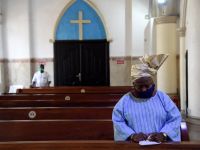Relief and rescue efforts were gearing up Sunday, one day after 47 people were killed and hundreds more injured by a strong earthquake that rocked the Andean region, with most of the damage and casualties occurring in Peru.
At least 47 people were killed and some 550 injured by the quake, which rocked the Andean region Saturday from Colombia to Bolivia.
Clean up crews and relief officials were grappling with infrastructural problems like fixing downed power and phone lines, as well as providing assistance to the displaced.
"The most important thing ... is to support any work on search and rescue to get those people that are injured," said Ian Logan, an official with the International Committee for the Red Cross (ICRC) speaking to CNN.
Logan said a primary concern was supply essential services and supplies to the needy, including shelter, blankets and food.
"We'll be looking after the absolute basic essentials first of all," he said.
"And of course, that thing that is always a big concern is making sure they have clean water and looking after any injuries," he told the television network.
The US Geological Survey's National Earthquake Information Center (NEIC) in Golden, Colorado said the quake, which struck Saturday at 2033 GMT, had a preliminary magnitude of 7.9 on the Richter scale.
Of the 47 who perished, 12 were killed in Arequipa -- Peru's second-largest city -- near the quake's epicenter, which was off the Peruvian coast, some 600 kilometers (375 miles) southeast of the capital Lima.
Fourteen others were killed in the Peruvian city of Moquegua, where there are a number of communities with adobe homes. Nine others were killed in the nearby town of Tacna.
"Homes are tumbling like houses of cards," a local correspondent in Moquegua told the radio station RPP.
Peru's president-elect Alejandro Toledo postponed a working visit to the United States, France, Spain and Germany. He was to have departed Sunday.
Instead, Toledo said he would travel to Arequipa, Moquegua and the equally hard-hit Peruvian city of Tacna, to view the devastation caused by the temblor.
Early footage of the earthquake's aftermath showed that the cathedral in Arequipa -- a town considered a national historical site by the UN Educational, Scientific and Cultural Organization (UNESCO) -- had been severely damaged, with one of its two highly ornamented towers lost.
Meanwhile, Peruvian President Valentin Paniagua traveled to Arequipa late Saturday -- with his defense, health and industry ministers in tow -- to assess the damage.
Authorities in southern Peru have declared the region a disaster zone and launched an immediate appeal for food, medicine, blankets and other forms of humanitarian aid. Power and telephone lines were out throughout the region.
The quake -- which lasted for more than 60 seconds in Peru and 30 to 40 seconds in Bolivia -- was also felt in the Peruvian towns of Cuzco, Pisco, Puno and Mollendo.
Slight effects could be felt in Lima, while stronger tremors were recorded in the central Bolivian town of Cochabamba and in the Chilean town of Arica, near the Peruvian border, which registered shocks of between 6.0 and 7.0 on the 12-degree Mercalli scale.
There have been no immediate reports of fatalities or property damage in Bolivia.
In Chile, there were reports of damage to various buildings in Arica, and residents were said to be in a state of panic, according to the National Emergency Center (NEIC) in Santiago.
The Pacific Tsunami Warning Center in Honolulu late Saturday lifted its warning about the the possibility of a tsunami, or tidal wave, developing off the coasts of Chile, Peru, Ecuador, Columbia, Panama, Nicaragua, El Salvador, Mexico and French Polynesia, saying that the quake instead caused merely "small sea level changes."
Similarly, the NEIC reported "some wave activity" along the cost of Chile, but said the roughly 0.6-meter (two-foot) waves were not high enough to cause significant damage -- LIMA (AFP)
© 2001 Al Bawaba (www.albawaba.com)







